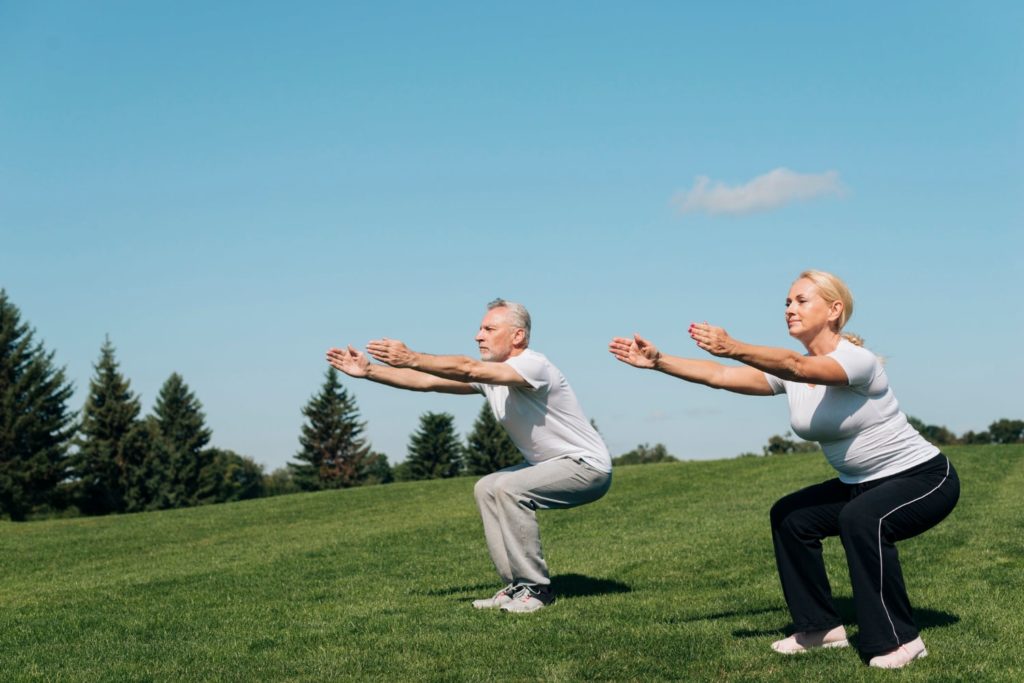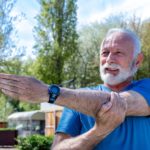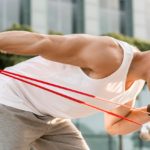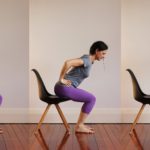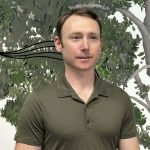
Grant Hansen
(RCEP, CHEK Exercise Coach, CHEK Holistic Lifestyle Coach Level 1)
What’s special about quads and why should we train them?
Quads are the largest muscles in the body by mass, and some of the key benefits of exercising them, apart from increased muscular strength and power, are better blood glucose regulation, bone, muscle and connective tissue growth and durability.[1]
As our muscles are responsible for 80% of circulating glucose uptake after meals, this gives us good reason to develop the size of our quads and muscles in general.[2,3]
The quadriceps — function and anatomy
Quad muscles, also known as the quadriceps femoris muscles, are part of the anterior muscles of the thigh.
The quads are involved in just about all movement that uses the legs. When our quads contract, they straighten the leg at the knee joint, enabling us to perform a variety of movements.[4] Some of the functions include:
- Keeping the knee stable
- Helping to straighten the knee
- Absorbing force when the heel hits the ground
- Flexing the hip (bringing knee towards chest)
- Helping to maintain correct posture and balance
- Moving and stabilising the patella (kneecap)
- Regulating our gait (the way we walk)
- Abduction of the thigh (to the side), which extends the leg, rotates the thigh outwards and also stabilises the kneecap
The quad muscles are on the front of our thigh, above our knee and below our hip. The quad tendons attach to our thigh bones and the kneecaps.
The upper leg muscles are attached to two major joints – the hip and the knee. How well we can move these joints depends on how optimal the muscles function.[4]
Hip
Flexion = bending the knee closer to the chest
Knee
Extension of the knee = pointing our toes and the whole foot moves
When it comes to the quadricep (quad) femoris muscle, the main superficial muscles are:
- Rectus femoris — extends the knee and flexes the thigh at the hip
- Vastus lateralis — extends and stabilises the knee
- Vastus medialis — extends the knee and stabilises the patella
- Vastus intermedius — extends the knee
Tensor of the vastus intermedius is the most recently discovered quad muscle that sits between the vastus lateralis and vastus intermedius. This muscle’s function is not yet known and researchers are still studying it.[5]
If the quads are not at their optimal length, such as when they are tight, they can create restrictions and less efficient movement. This increases the risk of injury.[6]
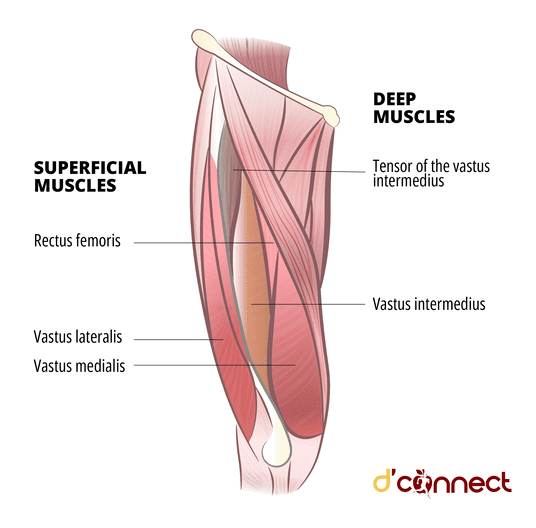
By training our quadriceps muscles we will improve everyday function and have greater capacity to do the activities that we enjoy.
Exercises for quadriceps
Because one of the quad muscles (rectus femoris) crosses two joints (knee and hip) it is important to include movements that use both of these joints.
By strengthening the quad muscles this will help with knee stability. There are beginner exercises that can be done easily.
An example is the squat which is similar to how we get up when sitting in a chair but we can vary this movement pattern. Everyday movement/activities help to strengthen the quad muscles, such as walking and getting up when sitting.
This is known as incidental exercise, however, some structured (specific) exercises can help to build the strength in these muscles.[7] An example is walking down hills where there is more use of the quad muscle.
Muscle fibre type and how it impacts the quad muscle and exercise
The quad muscle consists of around 50% type 1 fibres and 50% type 2. One of the quad muscles (vastus lateralis) has about two-thirds of muscle fibres that are fast-twitch.[8]
Strength resistance exercises
While resistance exercise training for hypertrophy is recommended at being >60% of 1 repetition max (often abbreviated to RM), to get muscle adaptations, there is research coming out finding that training at lower resistance (20-40% of 1 RM) with Blood Flow Restriction training (BFR) can have benefits.[9]
This research is promising and there is potential for a wide application for this type of training as many people are not able to tolerate resistance loads of >60% if their 1RM.[10]
The quads have regions that can be activated separately during different movements or exercises so having a range of exercises may help to strengthen all regions of the quads.
Resistance band exercises for quads
These are latex bands that put tension on the muscle as we do a movement, such as a leg press exercise. Resistance bands are beneficial for training since they are simple to use and are low cost. Also, there are varying intensity levels so the exercises can be progressed when they get easier.
Body weight exercises for quads
This means using our body to put tension on the muscle as we do movements such as the squat exercise. Like the resistance bands, this approach is low cost and there is a wide range of exercises that can be done almost anywhere.
Free weights exercises for quads
Exercises with free weights include dumbbells, barbells and kettlebells. These are commonplace in gyms, however we can be resourceful and use objects around the home or outdoors to get the resistance to stimulate muscle growth.
Free weights require us to use stabiliser muscles to help control the movement and maintain posture.
Machine weight exercises for quads
Machines are generally safe and easy to use, and can help to train a specific muscle or muscle group which can be useful when rehabilitating from an injury or wanting to create balance in the strength of muscles that are weaker than others.
Beginner exercises for quads
There are several easy exercises that we can start with, such as step-ups, squats and contractions.
Exercise “Step ups – with support”
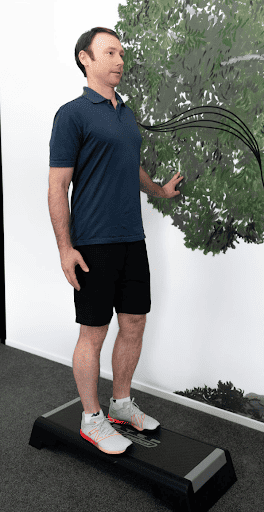
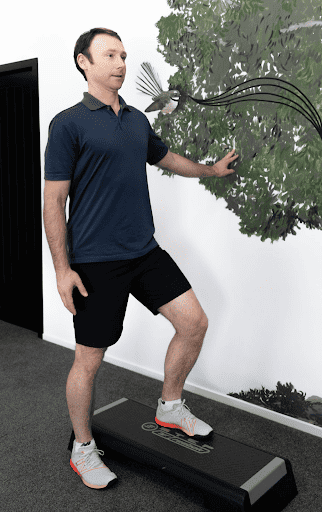
Exercise “Squats – with support”

Exercise “Quads strengthening”
Note — hold for a count of 7.
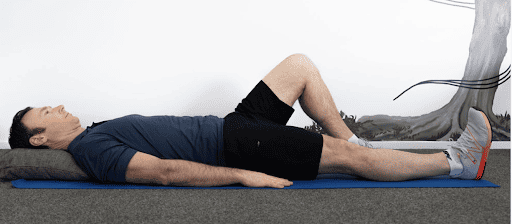
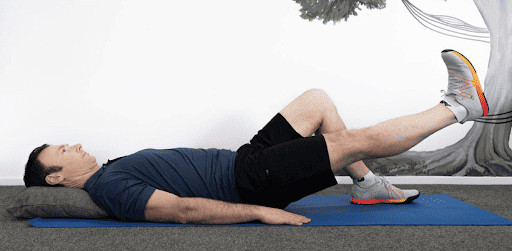
Exercise “Quads static contraction (Isometric)”
Note — hold for a count of 7.
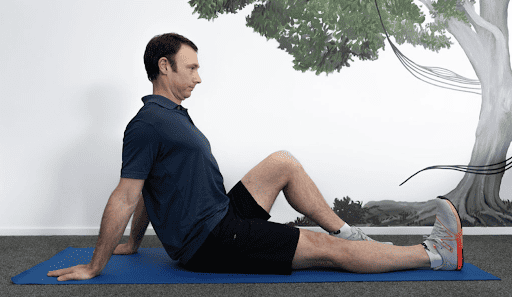
Stretches for quads
If the quads are too tight there is increased pressure on the lower back that could increase the risk of injuries. One simple way to check is to see if you can get your ankle back to your bottom when bending the knee, such as in the standing quad stretch.
Quad stretch “baby yoga pose”
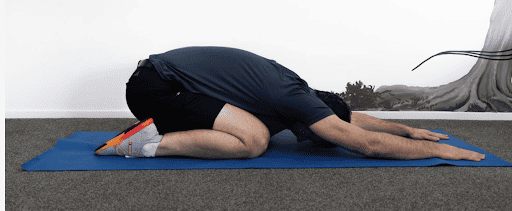
Quad stretch (lying)
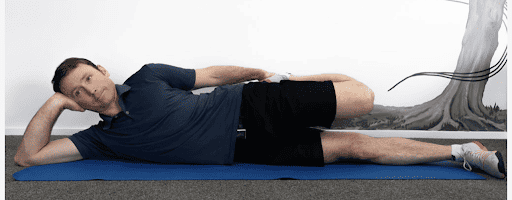
Quad stretch – standing

When exercising the quad muscle, we should aim for 10-12 repetitions, with lighter weight to build muscular strength.
Important note
It is important to train both upper and lower body exercises to get a balanced exercise programme. This is recommended to be 1–3 times per week for 45-60 minutes per session.[11]
Upper body exercises could include chest press, latissimus pull down, seated row, triceps extensions, and biceps curls. The lower body exercises could include leg press, leg extension, and leg curl.
Flexibility
As we showed earlier, there are many easy stretches to do to improve the flexibility of our quadriceps muscles. Be gentle with the stretches and pay attention to any pain or discomfort.
For most adults it is recommended to hold the stretch for 10-30 seconds. In older individuals, holding a stretch for 30-60 seconds may provide greater benefit toward flexibility.[12]
Related Questions
1. Can osteoporosis affect the strength in my quads?
There are associations with having osteoporosis and less muscle strength particularly and quadriceps strength, resulting in less bone mass.[13]
The types of exercise that help to prevent and treat osteoporosis are aerobic and strength training.
2. How often can I train quadriceps?
For resistance training, aim for 1-3 times per week. For aerobic training aim for 5-7 times per week for 30-60 minutes per session.[14]
The best starting point is to move throughout the day and avoid sitting. A key way to do this is with incidental exercise, which is movement built up in small amounts during the day.[15]
3. What exercises target all muscles in the quads?
Straight leg raises and step ups are two movements that will use all the quadricep muscles.
There are other options, some that are more advanced like walking lunges.
Please note that there are different ways to perform most exercises that will fit within your current level, and these can be adapted to suit a beginner or for a more advanced level.
If you are looking for more exercise guides, you can find them in our Activities and Performance section.
Grant is a registered Clinical Exercise Physiologist (CEP) and Holistic Lifestyle Coach. He has over 15 years of experience of working in New Zealand within the primary healthcare sector. After completing a Sports Science degree, Grant started working in the gyms around the North Island and was a Personal Trainer in Sydney…
If you would like to learn more about Grant see Expert: Grant Hansen.
References
(1) Singh, F. Hackettm, M., Schoenfeld, D., Vincent Heather K., Wescott, Wayne., (2019). ACSM Guidelines for Strength Training. Retrieved from https://www.acsm.org/blog-detail/acsm-certified-blog/2019/07/31/acsm-guidelines-for-strength-training-featured-download
(2) Merz, K., Thurmond, D., (2020). Role of Skeletal Muscle in Insulin Resistance and Glucose Uptake. Comprehensive Physiology
(3) Steenberg. D., Jørgensen. N., Birk.J, Sjøberg. K., Bente Kiens., Richter. E., Wojtaszewsk. J., (2019). Exercise training reduces the insulin‐sensitizing effect of a single bout of exercise in human skeletal muscle. Journal of Physiology.
(4) Kendall. F., McCreary, E., Provance. P., Rogers. M., Romani. W., (2005). Muscles: Testing and Function with Posture and Pain, 5th Edition
(5) Sahinis. C., Kellis. E., (2021). Systematic Review Anatomy, Morphology and Function of the Tensor of Vastus Intermedius: A Systematic Review. J. Funct. Morphol. Kinesiol.
(6) Gotlin. R., (2019). Sports Injuries Guidebook. Human Kinetics Publishers, 2nd edition
(7) Caspersen, CJ., Powell KE., Christenson, GM., (1985) Physical activity, exercise, and physical fitness: definitions and distinctions for health-related research. Public Health Rep.
(8) Meznaric, M., Cvetko. E., (2016). Size and proportions of slow-twitch and fast-twitch muscle fibers in human costal diaphragm. BioMed Res Int
(9) Patterson, S., Hughes, L., Warmington, S., Burr, J, Scott, B., Owens. J, Abe, T., Nielsen, J., Libardi, C., Laurentino, G., Neto, G., Brandner. C, Martin-Hernandez, J., Loenneke, J., (2019) Blood Flow Restriction Exercise: Considerations of Methodology, Application, and Safety. Front Physiology
(10) Early, K., Rockhill, M., Bryan, A., Tyo, B., Buuck, D., McGinty, J., (2020). Effect of blood flow restriction training on muscular performance, pain and vascular function. Int J Sports Phys Ther.
(11) ACSM (2018). ACSM’s Resources for the Certified Exercise Physiologist, A Practical Guide for the Health Fitness Professional. 2nd Edition
(12) Stretching and Flexibility Guidelines Update (2021). ACSM Guidelines. Retrieved from https://www.acsm.org/blog-detail/acsm-certified-blog/2021/03/18/stretching-and-flexibility-guidelines-update
(13) Liu-Ambrose, T., Eng, J., Khan, K., Carter, N., McKay.,H (2003). Older women with osteoporosis have increased postural sway and weaker quadriceps strength than counterparts with normal bone mass: overlooked determinants of fracture risk? Journals of Gerontology
(14) Miller, K.R., McClave, S.A., Jampolis, M.B. (2016). The Health Benefits of Exercise and Physical Activity. Curr Nutr Rep 5, 204–212
(15) Miller, K.R., McClave, S.A., Jampolis, M.B. et al. The Health Benefits of Exercise and Physical Activity. Curr Nutr Rep 5, 204–212 (2016). Retrieved from https://doi.org/10.1007/s13668-016-0175-5

